WaspsWasps Index Australian Large Wasps Australian Mud Nest Wasps Mud Wasp Velvet Ants Abispa ephippium Acarozumia amaliae Aulacidae Australodynerus Bembix Bembicinae Blue Hairy Flower Wasp Braconidae Chrysididae Cryptocheilus bicolor (Orange Spider Wasp) Delta latreillei (Potter Wasp) Eumeninae Ferreola handschini (Orange-collared Spider Wasp) Flower Wasps Gasteruptiid Wasp Hairy Flower Wasps Isodontia (Grass-carrying Wasp) Lissopimpla excelsa (Orchid Dupe Wasp) Mutillidae Paralastor sp. Pseudabispa bicolor ssp. nigrocinctoides Radumeris radula (Yellow Hairy Flower Wasp) Radumeris tasmaniensis (Yellow Hairy Flower Wasp) Sceliphron laetum Thynnid Wasps Tiphiidae Yellow and Black Wasp
Sceliphron laetum is one of the species of mud-dauber wasps that is native to Australia and south-eastern Asia. Members of this genus Sceliphron are solitary, building their cells out of mud and stocking them with paralysed spiders, before laying an egg in each of the mud cells.
The adult Sceliphron laetum has a black and yellow body with a long thin waist, and is up to 3 cm long.
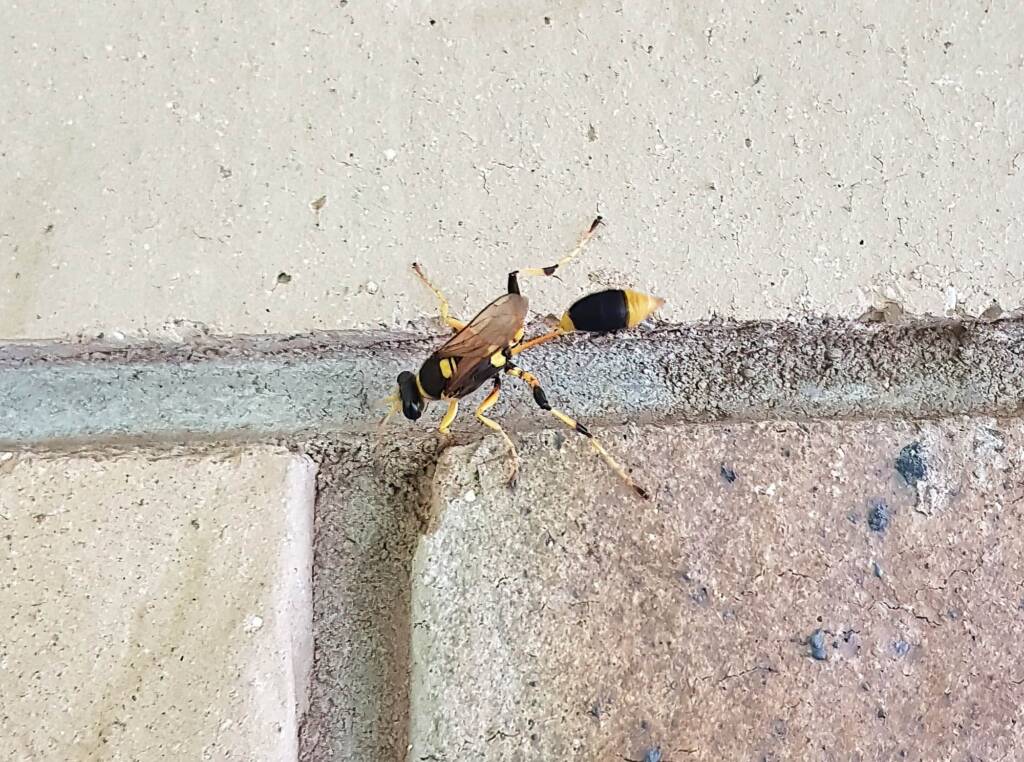
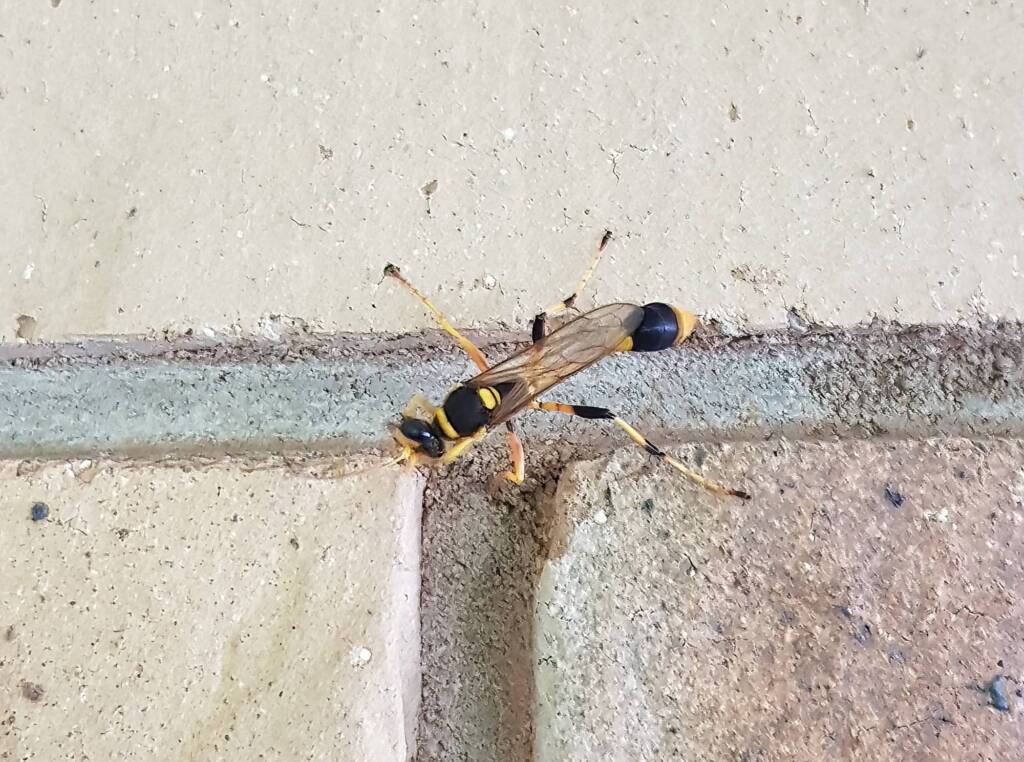
In the following image, the Sceliphron laetum wasp is making another mud cell.
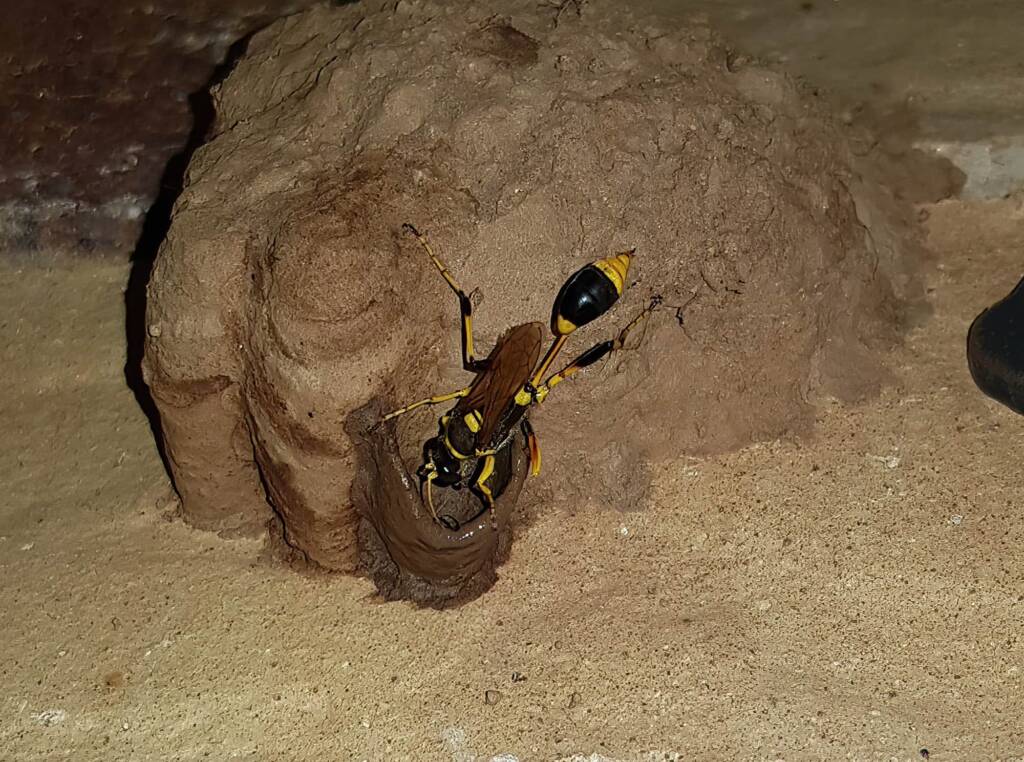
The adult wasp feed mainly on nectar. The spiders they catch, are paralysed and placed inside the nest cells to feed their young (larvae). It is believed that the spiders you can just see in the nest cell is the Long-tailed St. Andrew’s Cross Spider (Argiope protensa), some of which were seen in the same garden area, and have suddenly disappeared from their web.
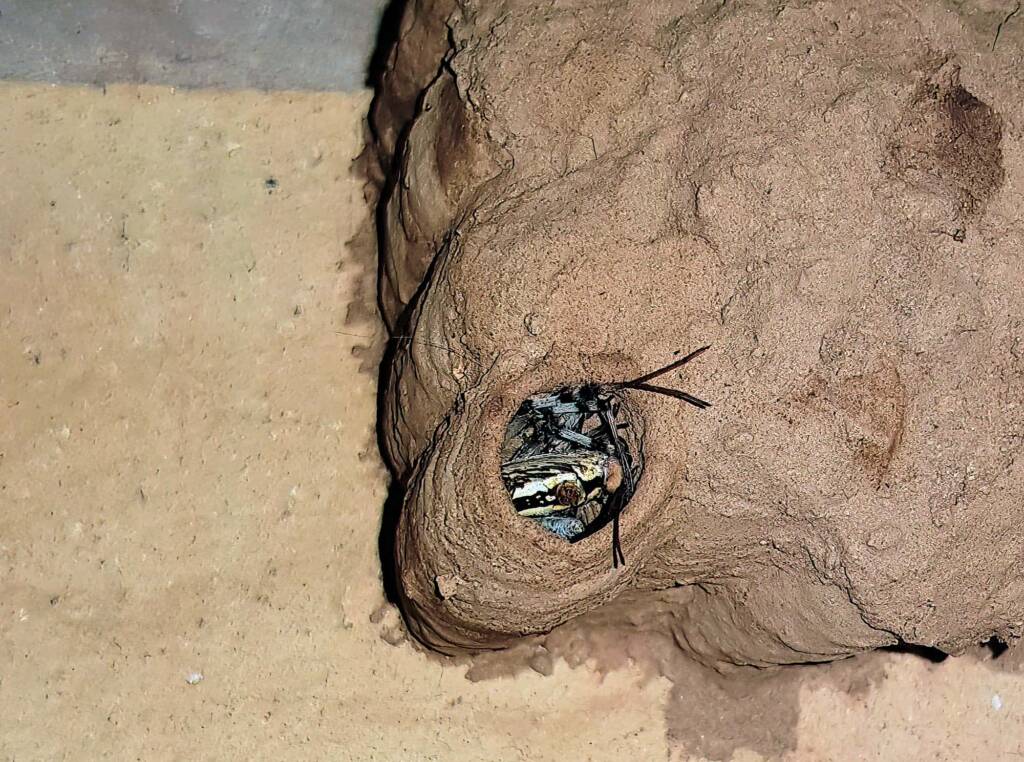
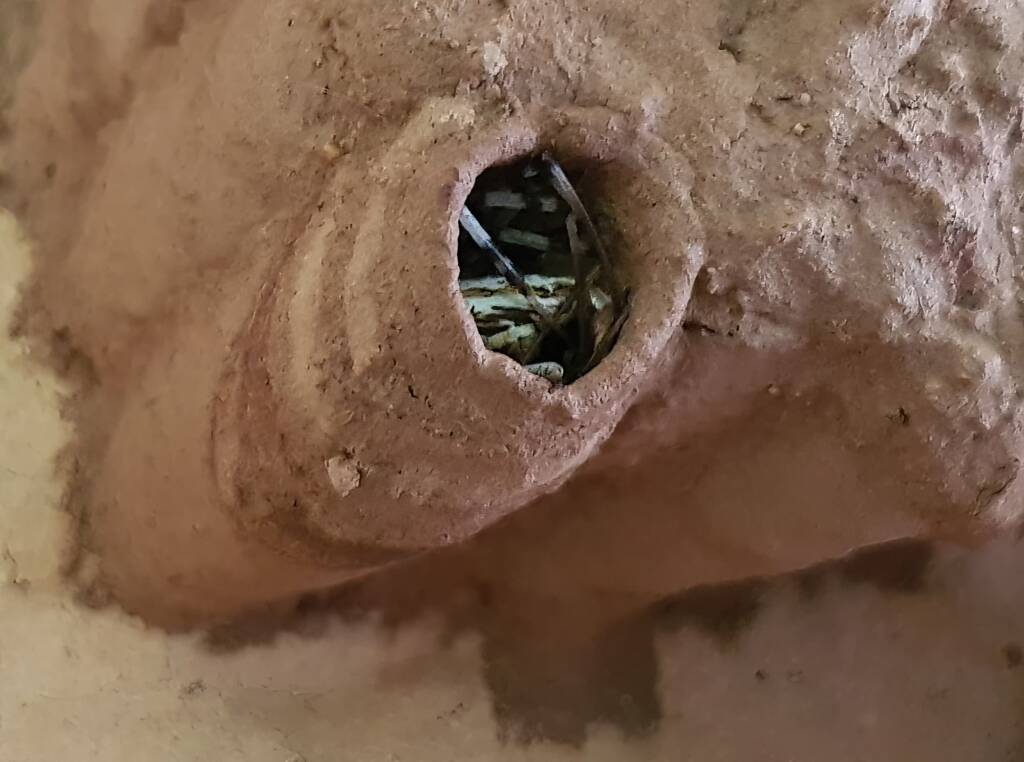
Once the paralysed spiders are placed in the mud cell with the larva, the cell is then sealed. It is thought that she will lay a total of about eight eggs in the nest.
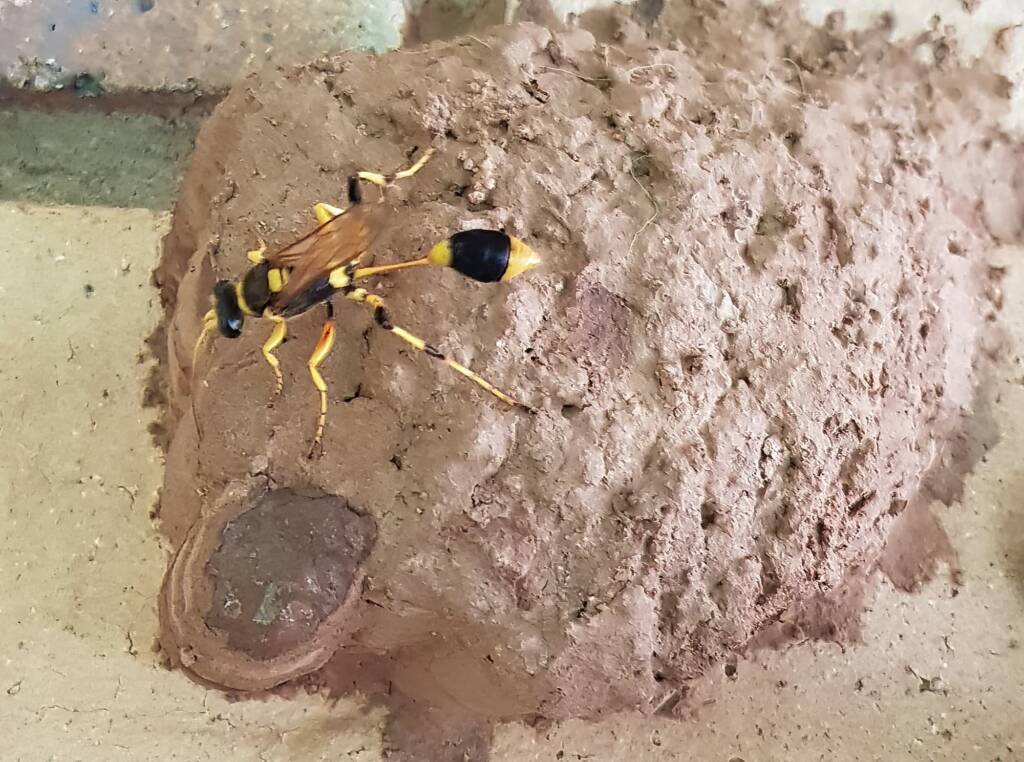
- Scientific classification
- Kingdom: Animalia
- Phylum: Arthropoda
- Subphylum: Hexapoda
- Class: Insecta
- Subclass: Pterygota
- Order: Hymenoptera
- Suborder: Apocrita
- Infraorder: Aculeata
- Superfamily: Apoidea
- Family: Sphecidae
- Subfamily: Sceliphrinae
- Tribe: Sceliphrini
- Genus: Sceliphron
- Species: Sceliphron laetum
Footnote & References
- Many thanks for ID by Russell’ Yong, member of Entomology Australia “Invertebratology”, https://www.facebook.com/groups/507004496955277/
- Covered-cell Mud-dauber Wasp (Sceliphron laetum), iNaturalistAU, https://inaturalist.ala.org.au/taxa/326131-Sceliphron-laetum
- Sceliphron laetum (Smith, 1856), Atlas of Living Australia, https://bie.ala.org.au/species/https://biodiversity.org.au/afd/taxa/1a03ac28-58ba-46c9-a175-fe9cf12c6cf5
- Wasps, water and mud, by Kerri-Lee Harris, 15 February 2018, Life in a Southern Forest, https://southernforestlife.net/travels/2018/2/15/wasps-water-and-mud
WaspsWasps Index Australian Large Wasps Australian Mud Nest Wasps Mud Wasp Velvet Ants Abispa ephippium Acarozumia amaliae Aulacidae Australodynerus Bembix Bembicinae Blue Hairy Flower Wasp Braconidae Chrysididae Cryptocheilus bicolor (Orange Spider Wasp) Delta latreillei (Potter Wasp) Eumeninae Ferreola handschini (Orange-collared Spider Wasp) Flower Wasps Gasteruptiid Wasp Hairy Flower Wasps Isodontia (Grass-carrying Wasp) Lissopimpla excelsa (Orchid Dupe Wasp) Mutillidae Paralastor sp. Pseudabispa bicolor ssp. nigrocinctoides Radumeris radula (Yellow Hairy Flower Wasp) Radumeris tasmaniensis (Yellow Hairy Flower Wasp) Sceliphron laetum Thynnid Wasps Tiphiidae Yellow and Black Wasp
InsectsBees Beetles Blattodea Butterflies Coleoptera Cicada Crabronidae Diptera Dragonflies & Damselflies Formicidae Hemiptera Heteroptera (True Bugs) Mango Planthopper Moths Orthoptera Orthopteroid Processionary Caterpillar Stink Bugs, Shield Bugs and Allies Syrphidae Wasps Water Scorpion (Laccotrephes tristis) Witchetty Grub
